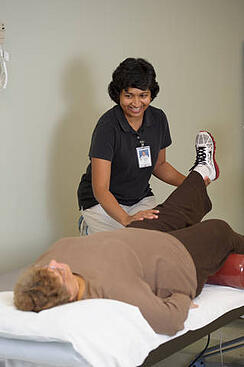 Because everyday needs and capabilities change throughout the aging process, extra effort may be required to help maintain optimal health and independence.
Because everyday needs and capabilities change throughout the aging process, extra effort may be required to help maintain optimal health and independence.
As a caregiver, you may be wondering whether physical therapy (PT) and/or occupational therapy (OT) is right for your parent.
Understanding the options can help you make informed choices toward promoting an active and fulfilling quality of life for your aging loved one.
The 411 on PT
PT is primarily designed for individuals who are experiencing physical dysfunction -- either skeletal or neuromuscular. Customized to suit a patient’s individual needs, PT comprises a broad spectrum of therapeutic treatments. In its most common sense, PT includes exercises and training designed to enhance coordination, balance, flexibility endurance, stability, posture and muscle function. Additionally, PT promotes increased range-of-motion through joint and soft tissue manipulation. Lesser-known aspects of PT include wound care and pain management.
Overall, physical therapy can enhance your loved one’s mobility both at home and within his/her community.
The 411 on OT
There is some overlap between the roles of physical therapists and occupational therapists, but their primary purposes differ: while physical therapists focus on treating physical impairments, occupational therapists promote enhanced functionality within a patient's social and physical environments.
Designed to improve an individual's ability to perform daily activities, OT may include education in everyday activities, such as bathing, dressing, eating and hygiene-related tasks. Occupational therapists may also introduce adaptive techniques for living with physical disabilities and/or the use of adaptive equipment and other home safety modifications. OT can also treat cognitive issues, such as memory and orientation. Like PT, OT may include exercises that strengthen coordination and foster normal joint movement.
Both PT and OT are usually available to patients through a physician's referral. If you are wondering whether your parent would benefit from PT or OT, talk with his/her primary care doctor. In many cases, these treatments can significantly improve your aging loved one's abilities, independence and quality of life.
Key Takeaways
- Physical therapy focuses on improving mobility to promote enhanced functionality and independence
- Occupational therapy focuses on fostering “occupations”-based skills directly related to daily living
- If you think an aging loved one would benefit from PT, OT or both, speak with his/her physician

